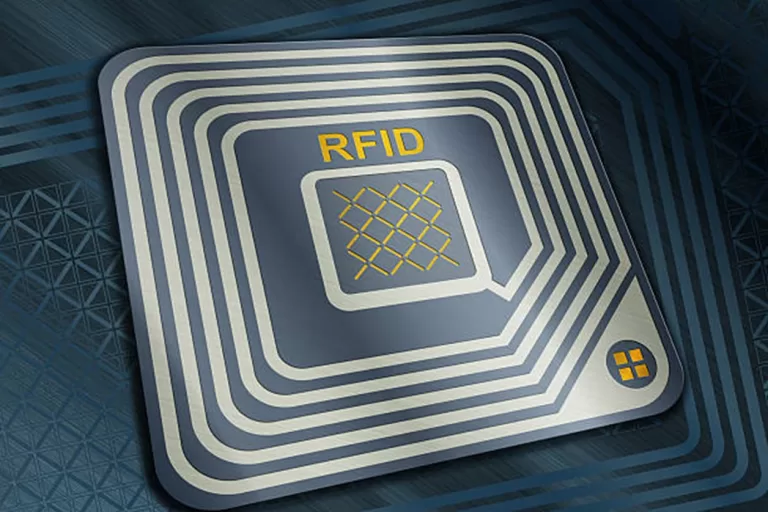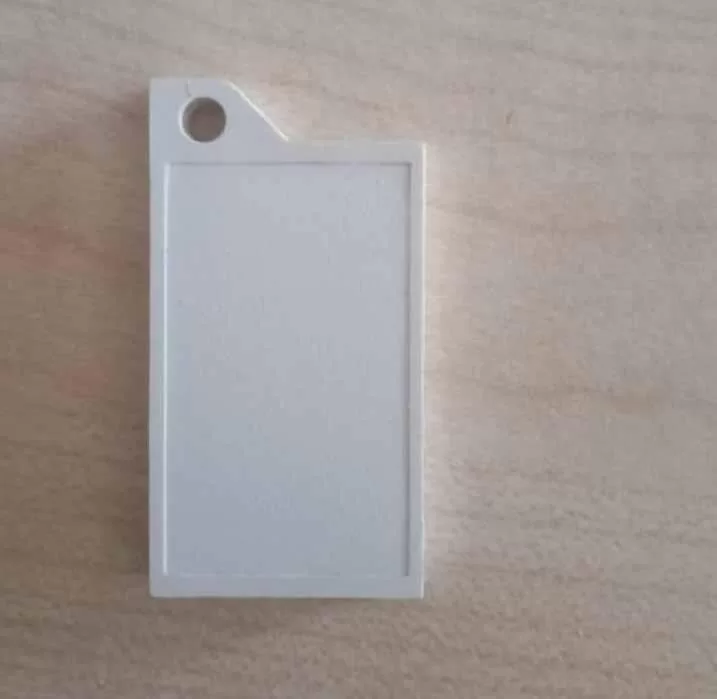In this blog, we will explore the answer to a pressing question generally asked about RFID tags: are RFID tags reusable? RFID (Radio Frequency Identification) technology has indeed worked wonders for numerous industries, providing efficient tracking and management solutions. However, understanding the reusability aspect of RFID tags is essential for maximizing their potential in various applications. Sure, let's revise it:
So, let's first understand what an RFID tag is.
An RFID (Radio Frequency Identification) tag is a small electronic device that consists of a microchip and an antenna. These tags are designed to store and transmit data wirelessly using radio frequency waves. The microchip within the RFID tag contains information that can be read by an RFID reader when the tag is within its range. The antenna is responsible for transmitting and receiving signals between the tag and the reader. RFID tags come in various forms, including passive tags, which do not have an internal power source and rely on energy from the reader; active tags, which have their own power source, enabling longer transmission ranges; and semi-passive tags, which combine features of both passive and active tags. They are commonly used for tracking and managing items, assets, and inventory across industries such as libraries, retail, logistics, healthcare, and manufacturing.


Reusability of RFID Tags :
The reusability factor of RFID tags depends upon their type and configuration, presenting distinctive advantages and applications.
Read-Only RFID Tags :
Read-only RFID tags come pre-programmed with unique identification numbers, making them immutable and well-suited for scenarios requiring fixed identification. This inherent characteristic ensures that the information stored on these tags remains unalterable, making them very reliable and secure. However, due to their pre-programmed nature, read-only tags cannot be reused once the initial data has been written onto them. Consequently, they are commonly deployed in applications where permanent identification is necessary.
1. Access Management : Read-only tags are instrumental in access control systems, ensuring secure entry to authorized people while safeguarding sensitive areas from unauthorized access. By deploying read-only tags, organizations can strengthen security protocols and prevent breaches.
2. Document Authentication : Libraries and archives use read-only RFID tags to label and authenticate books, documents, and archival materials. These tags store unique identifiers linked to cataloging systems, enabling efficient organization, retrieval, and preservation of valuable resources.
Read-Write RFID Tags :
Read-write RFID tags offer the flexibility to read, write, and rewrite data, allowing users to update information multiple times as needed. Unlike read-only tags, read-write tags can be reused, making them ideal for applications where dynamic data management is essential
Reusable RFID tags offer multifaceted applications across diverse industries
1. Asset Tracking and Management : Companies employ reusable RFID tags to monitor and manage assets like equipment, tools, and machinery efficiently. These tags facilitate real-time asset tracking, maintenance scheduling, and utilization optimization of these assets .
2. Inventory Control : Retail establishments utilize reusable RFID tags for inventory management processes. By tagging products with reusable tags, retailers achieve accurate stock tracking, minimize stockouts, and automate replenishment procedures, resulting in improved customer satisfaction and revenue generation.
3. Supply Chain Visibility : Reusable RFID tags play an important role in supply chain visibility and transparency. By tagging shipments and containers with reusable tags, companies gain real-time insights into their supply chain operations, enabling proactive decision-making, risk mitigation, and cost optimization.
Conditions to Consider Before Reusing an RFID Tag :
While Read Write RFID tags offer the potential for reuse, certain conditions must be evaluated to ensure their effectiveness and reliability in subsequent applications. Here are key considerations to keep in mind :
1. Physical Integrity : Before reusing an RFID tag, ensure that it remains physically intact and undamaged. Any damage to the tag's housing, antenna, or microchip can compromise its performance and longevity, affecting its ability to transmit and receive signals effectively.
2. Data Erasure : If the RFID tag contains sensitive or proprietary information, it's crucial to securely erase or overwrite the existing data before reuse. This prevents data breaches and unauthorized access to previous information stored on the tag.
3. Memory Capacity : Evaluate the RFID tag's memory capacity to ensure it can accommodate multiple writes and rewrites of data without degradation or loss of information. Sufficient memory capacity is essential for storing the required data for each reuse.
4. Quality Assurance : Conduct quality assurance checks to verify the functionality and performance of the RFID tag before reuse. Test the tag's read/write capabilities, read range, and data accuracy to ensure it meets the requirements of the application and delivers reliable performance.
5.Compatibility : Verify that the RFID tag remains compatible with the reader and system infrastructure used in the intended application. Compatibility ensures seamless communication between the tag and reader, enabling accurate data capture and processing during each reuse.
In conclusion, The question of whether RFID tags are reusable has been addressed, with distinctions made between read-only and read-write tags and their respective applications. While read-only tags provide immutable identification suitable for access control and document authentication, read-write tags offer flexibility for dynamic data management in asset tracking, inventory control, and supply chain visibility. As organizations utilize the potential of reusable RFID tags, it's essential to consider certain conditions before reuse, including physical integrity, data erasure, memory capacity, compatibility, and quality assurance. By adhering to these conditions, organizations can ensure the effectiveness and reliability of their reusable RFID tags.

